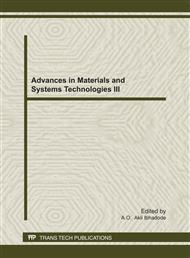p.393
p.403
p.413
p.421
p.431
p.439
p.449
p.457
p.467
Calculating Hydrodynamic Loads on Pipelines and Risers: Practical Alternative to Morison’s Equation
Abstract:
Hydrodynamic stability analysis is one of the major tasks in the design of subsea pipelines and risers. The analysis is important to ensure stability of pipelines and risers under the action of the hydrodynamic forces produced by waves and currents during construction and operation stages. Morison related these hydrodynamic forces to kinematic wave properties, water particle velocity, and acceleration. However, previous studies show that Morison’s equation does not describe accurately the forces for combined wave and steady current flow. The actual measured forces differ significantly from the forces calculated using Morison’s equation. Though Morison’s equation leads to easy computer application for design purposes, it is a very conservative approach resulting in high cost of construction of offshore structures. In this paper the Wake II Model is incorporated into MathCAD software to practically determine hydrodynamic forces acting on cylindrical offshore structures. The Wake II Model takes into account the vortex shedding effect in the wake of a bluff body resulting in velocity reversal, thus the velocity is modified to include this effect. The modified velocity, time dependent drag and lift coefficients are then used to calculate hydrodynamic forces of lift and drag using MathCAD software. The results showed that the forces predicted using the Wake II Model is significantly less in comparison to the Morison’s equation. The results achieved in this project are consistent with results achieved by Lambrakos in his comparison of the Wake Model predictions with measured forces (actual loads) from the Exxon Pipeline Field Measurement Project (PFMP). The Wake II Model lends itself to easy computer application such as MathCAD so ftware and will also reduce the overall construction cost of cylindrical offshore structures such as pipelines and risers.
Info:
Periodical:
Pages:
431-438
Citation:
Online since:
October 2011
Authors:
Keywords:
Price:
Сopyright:
© 2012 Trans Tech Publications Ltd. All Rights Reserved
Share:
Citation:


